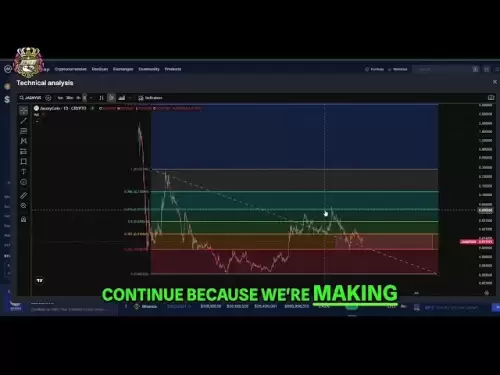 |
|
 |
|
 |
|
 |
|
 |
|
 |
|
 |
|
 |
|
 |
|
 |
|
 |
|
 |
|
 |
|
 |
|
 |
|

Despite receiving 25% of all federal research funding awarded to universities and colleges in 2021, just 11 U.S. universities are responsible for distributing the funds. Of these top research-funded universities, nine of them are located on either the East or West Coast. Only University of Michigan and University of Pittsburgh are representing the middle of the country. This trend has been consistent since 2010.
However, there are strong research programs at universities throughout the U.S. So why does such a small set of universities receive such a large portion of federal research funding? Is there bias toward these institutions or a hesitancy to criticize proposals from elite universities? Whatever the cause may be, the problem extends beyond federal research funding and also affects foundations that support research.
I’m the executive director of the Arnold and Mabel Beckman Foundation, where we provide basic science research grants with the vision of supporting young scientists today for tomorrow’s breakthrough discoveries. Our mission is to support “young scientists, and especially those that don’t yet have the clout to win major research grants.” One of my main objectives is to ensure that we solicit and evaluate all proposals using an inclusive, fair, and unbiased process. The Beckman Foundation’s success depends on our ability to identify and fund new exciting and innovative research ideas, and we believe that biases in our processes can impede us in accomplishing our mission.
Like many basic science funding organizations, we rely on peer review to evaluate and recommend the research projects that we consider for funding. One challenge in the basic sciences is the concentration of grant funding at relatively few U.S. institutions, and my colleagues and I have been concerned that our traditional peer review processes may be perpetuating this concentration.
Admittedly there are many benefits to continue funding established institutions that have made the investments in the infrastructure, research teams, and specialized equipment to conduct advanced research. But this also raises some concerns: Are we stifling research progress when only those with the access and connections to these elite institutions are able to participate? How many great ideas and breakthroughs do we ignore because they aren’t from the “traditional” places? Do the well-resourced institutions become less innovative if they get an advantage through our peer-review system for continued funding?
Of course, as a foundation focused on basic science, we turned to the data to examine the evidence and test our hypothesis. Starting in 2019, we did a detailed analysis of our own grant awards at the Beckman Foundation, and we saw a similar concentration of funding in our awards to the same institutions year after year. We asked ourselves: Are we identifying and funding the best scientific ideas, or does the institutional affiliation of an applicant unduly factor into our review processes?
This question led us change the proposal review process we used for our 2020 applications to a dual-anonymized structure to investigate if we saw any implicit bias in our reviews towards prestigious institutions. We then tracked our application statistics for the next four years of applications and saw a shift away from the prestigious institutions that enabled more applications from diverse universities to advance in our selection process. Our complete study methodology and findings are published in a 2024 eLife article.
In implementing this change, we required our applicants themselves to remove any gender, race, or institutional affiliation identifiers from their proposals. The reviewers were only provided with the anonymized research proposal without any supporting information about the applicant themselves.
Interestingly, we found a reduction in the relative advantage of applicants from the more prestigious institutions to advance in our review process after the anonymization step. Before anonymization, the proposals from elite institutions had 1.5 times greater-than-average chance of being selected to advance for further consideration, and after anonymization this advantage to advance dropped to only 1.2 times the average.
This shift in which proposals advance in our reviews brings forward more excellent scientific ideas from those not at these elite institutions to be included in the final stages of our review process to be considered for funding. The anonymization resulted in a reduction, but not elimination, of the advantage that the prestigious institutions had in our review process, likely indicating that the prestigious institutions do have an intrinsic advantage: Their researchers and resources put forward above-average and compelling research proposals. However, our finding that the likelihood for these proposals to advance was reduced showed us that these advantages of being associated with certain prestigious institutions were given undue influence in our review processes.
Ensuring that our review processes are fair and inclusive to all of our applicants regardless of their institution was the goal of our process change, but we also realized the additional benefits that the anonymized proposals were easier to read and evaluate, which reduces reviewer fatigue. During the review discussions we stayed focused on the innovation and the science in the proposal without additional discussions of perceived mentor status, publication rates, journal impact factors, and other ancillary topics.
Like all big systemic challenges, there are many possible solutions being explored. While we have focused on the dual-anonymized review approach, other
免責聲明:info@kdj.com
所提供的資訊並非交易建議。 kDJ.com對任何基於本文提供的資訊進行的投資不承擔任何責任。加密貨幣波動性較大,建議您充分研究後謹慎投資!
如果您認為本網站使用的內容侵犯了您的版權,請立即聯絡我們(info@kdj.com),我們將及時刪除。
-

- Ruvi AI:雪崩的回報墜入加密貨幣場景
- 2025-07-06 08:30:13
- Ruvi AI成為了引人入勝的加密競爭者,其公用事業驅動的方法,透明的做法和高增長潛力使投資者獲得了可觀的回報。
-

- XRP的狂野騎行:拋物線公牛是否在地平線上?
- 2025-07-06 08:30:13
- XRP顯示出潛在的價格上漲和牛市的跡象,這是歷史模式,監管清晰度和機構採用的推動力。
-

- 比特幣,懷疑和數十億:解碼加密鯨動作
- 2025-07-06 08:50:13
- 從潛在的黑客到稅收欺詐交易,揭開了大規模比特幣交易背後的奧秘及其引起的懷疑。
-

- 比特幣的價格發現任務:顯微鏡下的集會結構
- 2025-07-06 08:50:13
- 比特幣調情,有歷史新高,目光因此而發現。它會打破$ 112K並點燃加密貨幣市場嗎?
-

-

- 比特幣,十億美元和懷疑:一個加密難題
- 2025-07-06 09:10:12
- 從入侵的錢包到特朗普的加密帝國,深入研究了一個有趣的比特幣,十億美元的交易以及周圍的懷疑。
-

-

-



























































